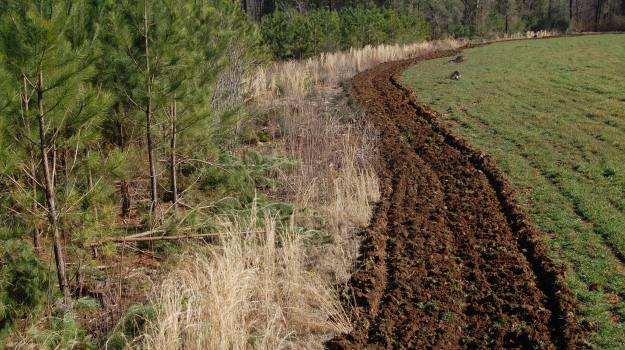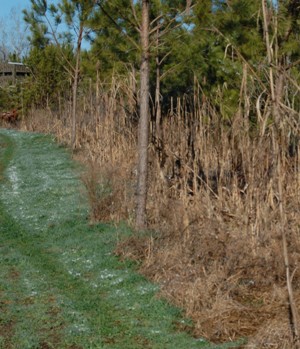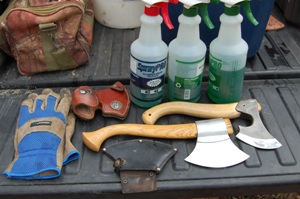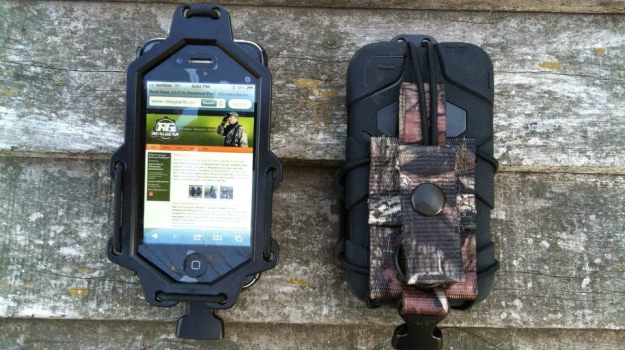
Successful Whitetail Edges and Ecotones
By Mark W. Thomas, Certified Wildlife Biologist
The Problem
When evaluating properties and making recommendations to landowners, I am often confronted with a situation that is common to many older, well-established food plots. With the sunlight able to penetrate the edges have closed in over time, and are so thick with brush, blackberry, and many non-native species like Chinese privet, that it impedes whitetail deer and other wildlife from entering. In some instances, the only access to a food plot is via the road system utilized by equipment; the edges of the food plot are impassible. In other cases, there may be one or two access trails for an entire food plot.
Mature bucks stop using food plots during daylight hours where this has occurred. When I encounter this I always ask the landowner, when was the last time that they saw a mature buck in the plot?” The answer is usually “five to seven years ago.” Many landowners have never wondered why older-aged bucks stopped utilizing their food plots, and may incorrectly surmise that it is due to hunting pressure. That certainly can be a factor, and can be the leading cause on properties with very high hunting pressure. But, on properties where the hunting pressure is low to moderate, and mature bucks have stopped utilizing your plots, you must evaluate your edges carefully to determine if access may be the problem.
The Fix!
 If you have edges that are so overgrown that they are choked with vegetation, and do not allow whitetails easy passage into your food plot, then you will need to address the problem. The best method that I have found, and the least expensive and most permanent, is to utilize Roundup® (or generic equivalent like Razor Pro®) and simply spray the plant community along the edges of your food plot, and well back into the surrounding habitat. I use a Polaris Sportsman Big Boss 6X6, with a 45 gallon tank in back, and a boom with independent BoomBusters®. You may need to use a wand with a 20 to 30 foot reach in order to remove some of the thicker vegetation. Wait about 6 to 8 weeks, and then brushhog to remove the dead material.
If you have edges that are so overgrown that they are choked with vegetation, and do not allow whitetails easy passage into your food plot, then you will need to address the problem. The best method that I have found, and the least expensive and most permanent, is to utilize Roundup® (or generic equivalent like Razor Pro®) and simply spray the plant community along the edges of your food plot, and well back into the surrounding habitat. I use a Polaris Sportsman Big Boss 6X6, with a 45 gallon tank in back, and a boom with independent BoomBusters®. You may need to use a wand with a 20 to 30 foot reach in order to remove some of the thicker vegetation. Wait about 6 to 8 weeks, and then brushhog to remove the dead material.
Another method is to bring in a mulcher, like a Fecon FTX130-FM1, Rayco C87FM/LC, or ASV RC100, with a mulcher/shreader head. These are sometimes called “Bullhogs.” Clean out the edges until you have ground-up all of the edge vegetation. Wait until sprout height is 18 to 24 inches tall, and then spray with Roundup® to kill the root systems of the plants. Never bullhog without a follow-up herbicide treatment or you will simply increase your stem density approximately 10-fold due to re-sprouting.
The definition of ecotone is a transition area between two adjacent but different types of landscape, such as forest and grassland. It may be narrow or wide, and it may be local (the zone between a field and timber lot) or regional (the transition between forest and grassland ecosystems). An ecotone may appear on the ground as a gradual blending of the two communities across a broad area, or it may manifest itself as a sharp boundary line. (Source Wikipedia)
Eco What?
The other situation that I often encounter that can be part of the same “edge” problem is a lack of ecotones. Ecotones are transitional areas that are composed of early successional plant communities and/or conifers (pine) of varying heights that give mature bucks a place to travel or stand and observe in relative protection prior to entering the food plot. Food plots without adequate ecotones, and those whose edges are too thick for deer to move through, are likely not to be productive for you.
How do you create an ecotone around your food plots? In the past, I just disked a strip around each plot of varying width (from 10 to 30 feet), and allowed native plant seeds to germinate like broomsedge, sumac, American beautyberry, blackberry, legumes and forbs. This would normally take around 2 to 3 years to create an adequate plant community of the correct height to partially conceal bucks. You want some vegetation to be rather tall, at least 5 to 6 feet in height. Now, there is a better and faster way.
The Solution
 A quicker solution would be to plant a mixture of annuals that would give you an immediate ecotone, and if allowed to remain standing throughout the fall and winter, would be utilized by mature bucks during the hunting season as travel lanes. When Mossy Oak came out with their new product called WhistleBack, and I evaluated the seed blend, I knew this was the perfect product for establishing immediate ecotones around food plots.
A quicker solution would be to plant a mixture of annuals that would give you an immediate ecotone, and if allowed to remain standing throughout the fall and winter, would be utilized by mature bucks during the hunting season as travel lanes. When Mossy Oak came out with their new product called WhistleBack, and I evaluated the seed blend, I knew this was the perfect product for establishing immediate ecotones around food plots.
WhistleBack is a product that was designed for quail, turkey, pheasants, and ducks, and is referred to as “The Bird Blend.” WhistleBack consists of Sorghum (WGF), White Proso Millet, Brown Top Millet, Shallu Egyptian Wheat, Leafy 22 Hybrid Pearl Millet, and Peredovik Sunflower. The Egyptian Wheat component comprises 14% of the mix, with Sorghum (28%), White Proso Millet (24%), and Brown Top Millet (19%) making up the bulk of the mix. Egyptian Wheat is a very tall plant, and averages over 8 – 10 feet tall on most sites. The Peredovik Sunflower is the next tallest in the mix, followed by the Millets. Plant with a seed drill or simply broadcast over a well prepared seedbed and cover with about ¼ inch of topsoil. Planting rate is 40 pounds per acre. Ten pounds is enough to plant a strip 30 feet wide and 300 feet long. The best time to plant is late spring or early summer. Lime and fertilize according to your soil test.
“Daylight Your Edge”
Normally, when I’m conducting edge work, I’ll go ahead and ring the food plot and inject all non-hard mast producing trees like red maple, ash, and sweetgum with a small hand axe. I prefer injecting with imazapyr at a 50:50 rate with water during the dormant season (winter – after the close of the deer season) up to about the middle of March. Make one injection site for every 3 to 4 inches DbH (Diameter at breast height) and place one milliliter of the herbicide mixture in each hack. If you have any non-native trees like Chinaberry, be sure to inject these at the same time. Make sure to read and follow herbicide label instructions for either foliar or injection work.
Conclusion
The edges of your food plots are probably the most important feature there is, and are often the most neglected. I recommended WhistleBack around the food plots on a property in Alabama last year where the owner had not seen a mature buck for over seven years. After the removal of the edge vegetation with a bullhog, sun shining and removing non-native vegetation, spraying with herbicide, and planting WhistleBack around the edges, he saw three mature bucks over 140” during the hunting season on this plot and harvested a buck that grossed 156” while it was standing in the WhistleBack. So, give your bucks an edge, and you’ll give yourself one too.
Mark Thomas is a Certified Wildlife Biologist, President of Forestry/Wildlife Integration, and Chairman of the Board of the Quality Deer Management Association. His web site is www.forestrywildlifeintegration.com






























